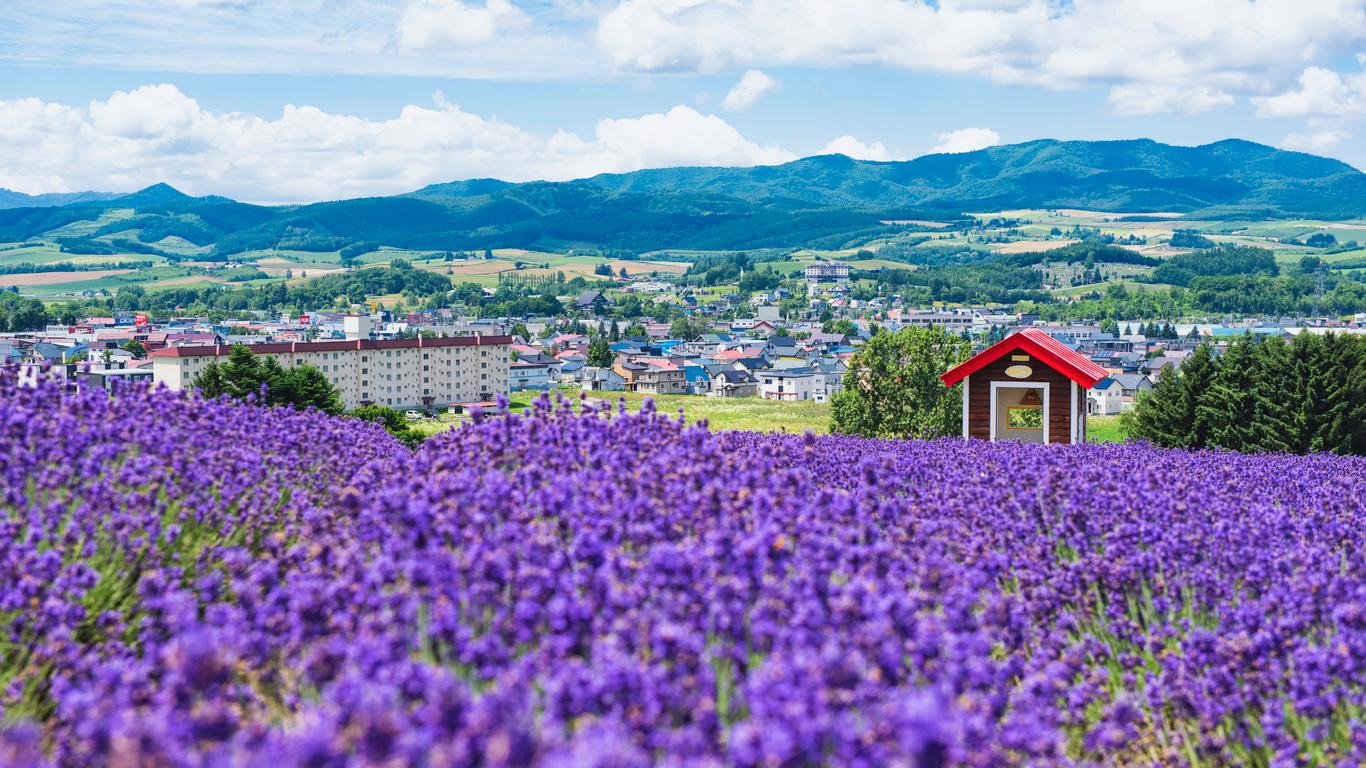Furano changes colour with the seasons, its fields turning purple when the lavender is in bloom, then transforming into a white wonderland during four months of winter. Fresh hues change Furano's atmosphere, with the summer months all about charm and the winter centred around the thrills of the ski slopes. Located in Central Hokkaido, between the cities Sapporo and Asahikawa, it's become one of the most popular tourist destinations in the north of Japan.
Endless kilometres of purple cascade through the Furano Flower Fields in July, the fresh lavender providing an inspiring sight beneath the mountains. The towns of Furano and Biei are situated in the heart of the bloom and every angle is photogenic. Furano's ski slopes are exhilaratingly steep and they've hosted the FIS Downhill World Cup on ten occasions. Outside of winter, many visitors combine Furano with Daisetsuzan, Hokkaido's largest and wildest national park.
Furano Station is on the JR railway network and there are direct trains to Asahikawa and Sapporo. The ski resort is ten minutes uphill from the station, a journey most visitors do by taxi or shuttle bus. Transport connections are enhanced in winter when a direct bus operates from New Chitose Airport to the Furano ski resort and express trains run to Furano from Sapporo Station.
Furano's ski resort has historically struggled to receive the recognition enjoyed by nearby Niseko and Rusutsu. The slopes here are mostly for experienced skiers and snowboarders, and many of Asia's pros train here, enjoying the nine annual metres of fresh powder. The ski resort is split across the Kitanomine and Furano zones, and the latter stays open into May, giving it the longest season of any Japanese ski resort.





